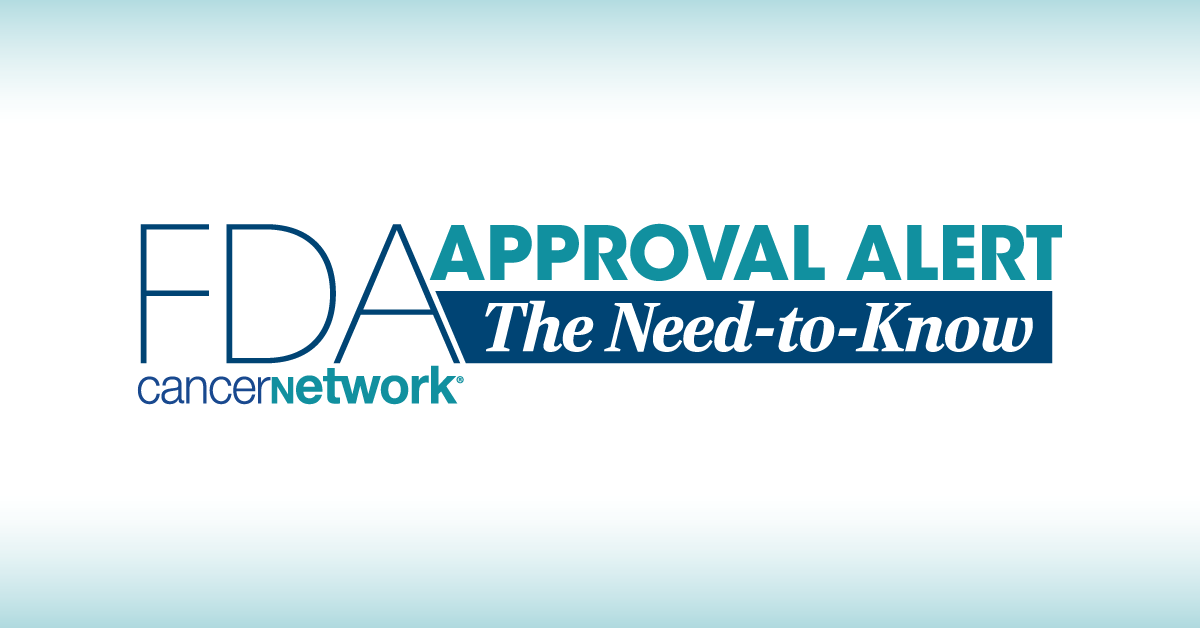Ribociclib Combo Approved in HR+/HER2- Stage II-III Early Breast Cancer
Results from the NATALEE trial of ribociclib/NSAI vs NSAI alone support the approval for patients with HR-positive, HER2-negative early breast cancer.
Data from the phase 3 NATALEE trial (NCT03701334) support the FDA approval of the ribociclib combination in patients with HR-positive, HER2-negative early breast cancer at high risk of recurrence.

The FDA has approved ribociclib (Kisqali) plus an aromatase inhibitor as adjuvant treatment for patients with hormone receptor (HR)–positive, HER2-negative stage II and III early breast cancer at high risk of recurrence, according to a press release from Novartis.1
The dosing information included a once daily oral dose of ribociclib at 400 mg or two 200 mg tablets for 3 weeks followed by 1 week off in combination with 4 weeks of any aromatase inhibitor. Support for the approval came from updated findings from the phase 3 NATALEE trial (NCT03701334), which were recently presented at the 2024 European Society of Medical Oncology (ESMO) Congress.2
“The FDA approval of [ribociclib] for this early breast cancer population, including those with N0 disease, is a pivotal moment in improving our approach to care,” Dennis J. Slamon, MD, director of Clinical/Translational Research, UCLA Jonsson Comprehensive Cancer Center, chairman of the Board of Translational Research In Oncology (TRIO), and NATALEE trial lead investigator, said in the press release.1 “Today’s approval allows us to offer treatment with a CDK4/6 inhibitor to a significantly broader group of people as a powerful tool that, combined with endocrine therapy, can help further minimize their risk of cancer returning.”
Recent findings showed that at a median follow-up of 44.2 months across the intent-to-treat population, the 3-year invasive disease-free survival (iDFS) was 90.8% in those receiving ribociclib plus a nonsteroidal aromatase inhibitor (NSAI) vs 88.1% with NSAI alone. At 4 years, the iDFS rates were 88.5% vs 83.6%. Overall, treatment with the ribociclib combination reduced the risk of recurrence by 28.5% (HR, 0.715; 95% CI, 0.609-0.840; P <.0001).
In patients with stage II disease, the iDFS rates receiving ribociclib plus NSAI or NSAI alone were 94.4% vs 92.7% at 3 years and 93.9% 89.6% at 4 years (HR, 0.644; 95% CI, 0.468-0.887). For those with stage III disease, iDFS rates were 88.3% vs 84.8% at 3 years and 84.3% vs 78.4% at 4 years (HR, 0.737; 95% CI, 0.611-0.888).
For patients with N0 disease, the 3-year iDFS rates were 93.4% vs 90.8% in patients receiving ribociclib plus NSAI or NSAI alone, respectively, and 92.1% vs 87.0% at 4 years (HR, 0.666; 95% CI, 0.397-1.118). Patients with N1 to N3 disease had iDFS rates of 90.4% vs 87.7% and 88.0% vs 83.0% at 3 and 4 years, respectively (HR, 0.731; 95% CI, 0.617-0.866).
Adverse effects (AEs) of any grade that were of special interest included neutropenia (62.8% vs 4.5%), arthralgia (38.8% vs 44.4%), liver-related toxicity (26.7% vs 11.4%), and nausea (23.5% vs 7.9%) in the ribociclib plus NSAI and NSAI alone arms, respectively. Additionally, grade 3 or higher AEs of special interest in the ribociclib arm included neutropenia in 44.4% of patients.
The trial’s primary end point was iDFS. Secondary end points included distant disease-free survival, recurrence-free survival, overall survival, and safety.
“Breast cancer treatment can take a toll on your physical and mental health, and you may worry about the risk of your cancer coming back. This risk is different for everyone, depending on many factors, but should not be underestimated. The FDA approval of [ribociclib] for more people with breast cancer is welcome news and empowers people diagnosed with early breast cancer with a new option to help manage and control their risk of cancer coming back,” Valarie Worthy, co-founder & vice president of Community Outreach and Engagement, Touch, The Black Breast Cancer Alliance, concluded.1
References
- FDA approves Novartis Kisqali® to reduce risk of recurrence in people with HR+/HER2- early breast cancer. News release. Novartis. September 17, 2024. Accessed September 17, 2024. https://shorturl.at/p0jbc
- Fasching PA, Stroyakovskiy D, Yardley DA, et al. Adjuvant ribociclib plus nonsteroidal aromatase inhibitor in patients with HR+/HER2– early breast cancer: 4-year outcomes from the NATALEE trial. Presented at the 2024 European Society for Medical Oncology Congress (ESMO); September 13-17, 2024; Barcelona, Spain. LBA13.